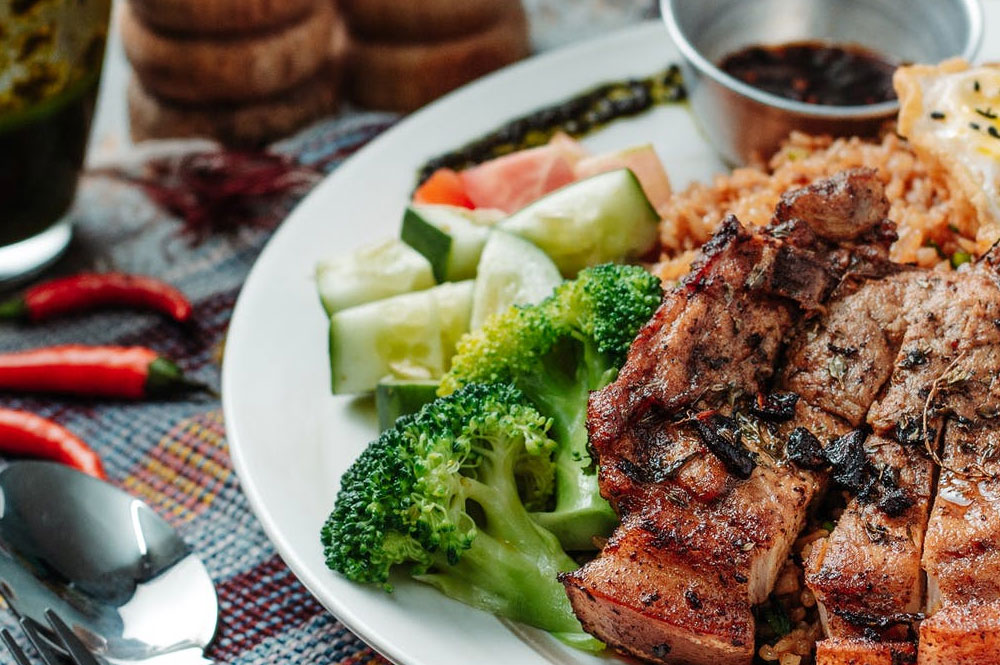Diabetes mellitus
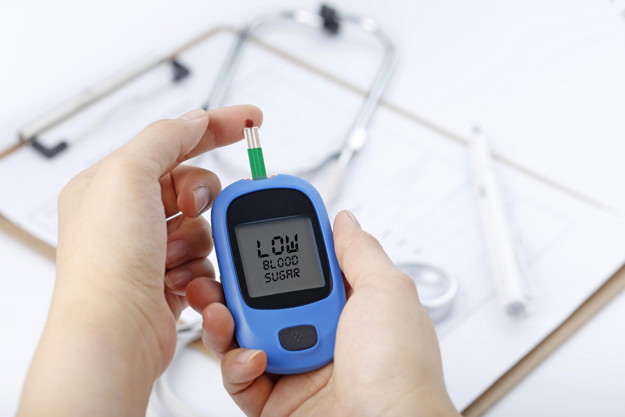
Diabetes mellitus, commonly called diabetes is a chronic metabolic disease condition. Carbohydrates present in food are converted into a simple sugar called glucose within the body. This glucose travels throughout the body via the bloodstream. The beta cells of the pancreas secrete a hormone called insulin. This insulin makes blood glucose to move into cells and utilize for energy. During the disease condition diabetes, your body does not produce the required amount of insulin or does not use its own insulin as it is, leading to a rise in blood sugar levels. Elevated blood sugar levels increase inflammatory conditions and cause several health complications. (1)
Types of diabetes
There are mainly three forms of diabetes as;
- Type 1 diabetes – This is also called insulin-dependent diabetes. A type of autoimmune disease that normally occurs in childhood. Once the immune system mistakenly identifies its own beta cells of the pancreas and destroy them. The insulin is not produced as the organ is damaged permanently.
- Type 2 diabetes – This is called non-insulin dependent diabetes. The most common form of diabetes. Although the body secretes insulin, cells do not use it effectively. In the beginning, the pancreas produces more insulin to transport blood sugar into the cells. But later, it cannot keep up and glucose builds up in cells. The reasons for type 2 diabetes may include overweight, genes, broken beta cells, too much glucose from the liver and metabolic syndromes like high blood pressure, and high cholesterol.
- Gestational diabetes – This condition develops in pregnant women. Controlling gestational diabetes is important as fetal growth and development are affected by the mother’s blood sugar level. Normally this condition goes away after childbirth.
- Other forms of diabetes – Sometimes diabetes is caused by diseases of the pancreas, surgeries, medications, and infections. (1)
Disease complications
Elevated blood sugar levels can increase the risk of developing serious health complications. Cardiovascular problems, kidney diseases (diabetic nephropathy), nerve diseases (diabetic neuropathy), eye disease ( diabetic retinopathy), and gum complications are some of the complications of diabetes. Also nerve damages can cause pain, tingling, and loss of feelings. (2)
If you don’t give the diabetics the choice of low carbohydrate diet, you wont give them the choice to avoid complications.
Katharine Morrison
Carbohydrates and diabetes
At the end of digestion, all carbohydrates are digested into simpler form glucose. The amount of blood glucose present in the blood will depend on the type and amount of food consumed. Carbohydrates in the diet have the biggest effect on the blood glucose level. A person’s daily carbohydrate requirement may depend on age and physical activity. Importantly, diabetes patients have to concern about carbohydrate intake. The quality of carbohydrates is assessed using the Glycemic Index (GI). Particularly, it provides an idea about how fast the body converts food carbohydrates into glucose. Generally foods with a low GI will be beneficial for managing blood sugar levels. Importantly, a diabetic patient’s diet plan plays an important role in controlling blood sugar levels. (3)
Food strategies to control blood sugar
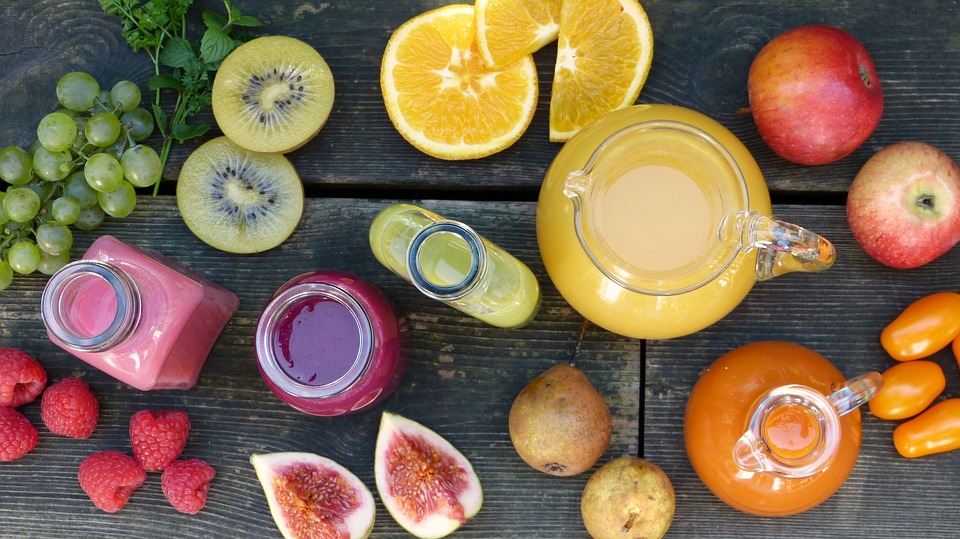
1. Ginger
The prominent chemical compound present in the rhizome of ginger is gingerols. Gingerols can uptake glucose into the muscle cells even without insulin. Importantly, ginger controls blood sugar levels while providing long term health benefits for people with type 2 diabetes. The ginger rhizome can be used in different forms as in fresh, dried, powder, and juice or as oil. It can be incorporated into once diet in different forms. Ginger tea, ginger lemonade, and ginger water are some forms of beverages. Also ginger is the main component of various food recipes. (4)
2. Cinnamon
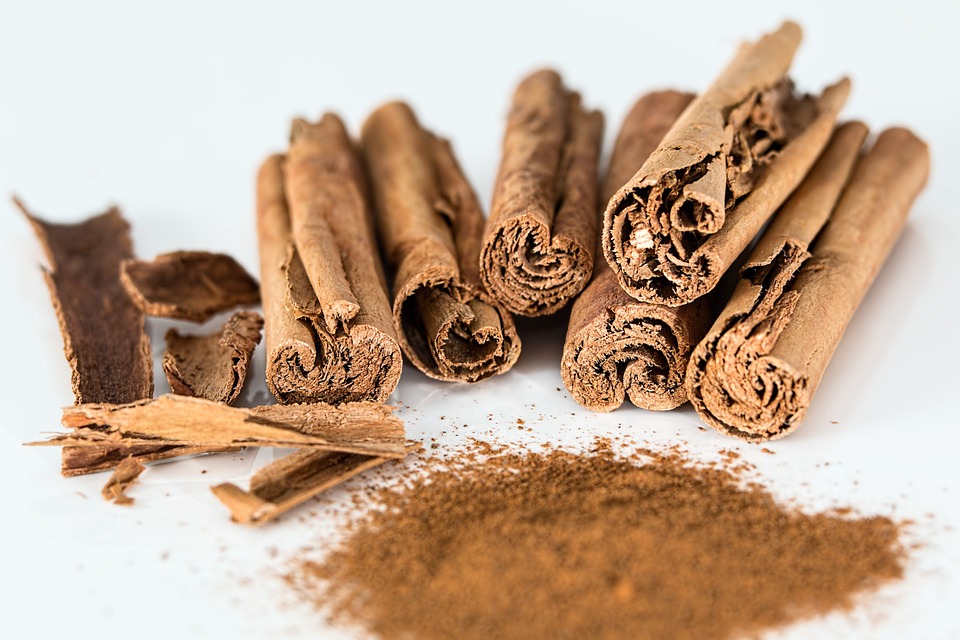
Source: Pixabay.com)
Cinnamon is an aromatic spice that is used worldwide to sweeten food preparations. It is loaded with antioxidants. Furthermore, cinnamon can imitate insulin activity and increase the transport of glucose into the cells. It also increases the sensitivity of cells to insulin. In addition to that, research studies have found that cinnamon has an excellent ability to reduce fasting blood sugar. Cinnamon can be used as a supplement or powder added to foods. (5)
3. Nuts
Walnuts, almonds, and peanuts are best known healthy nuts for diabetes. Obviously nuts have a low GI.
These nuts aid in weight loss as they promote the feeling of stomach fullness. It is because, healthy fiber, fats, and proteins present in nuts reduce the appetite. Also nuts process anti-inflammatory properties. It should be noted that eating not much than a handful will be beneficial to health. (6)
4. Turmeric
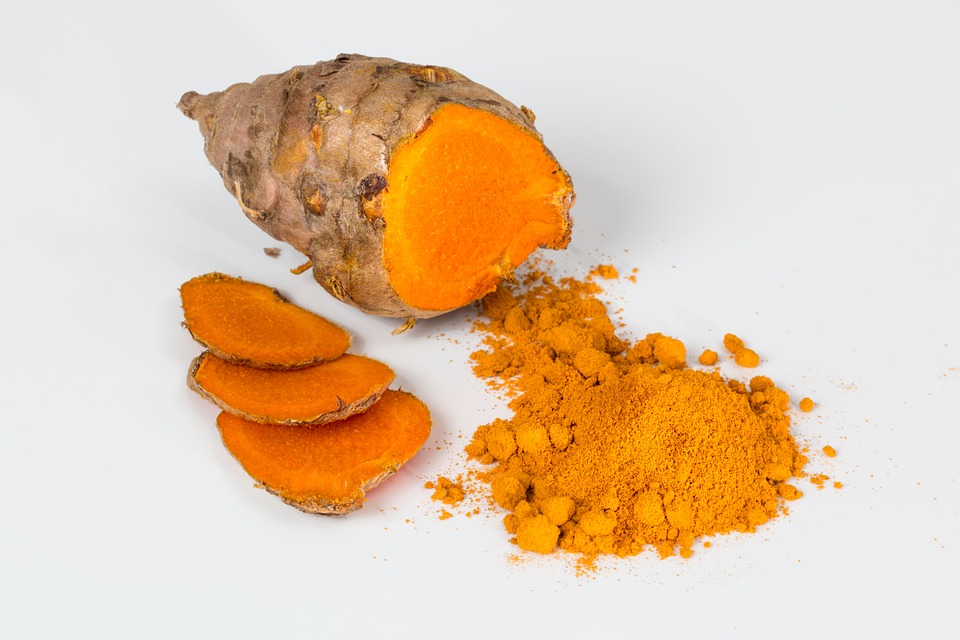
Turmeric is a prominent spice used in Asian countries for cooking purposes. One of the main chemical compound present in turmeric is curcumin. Curcumin helps to manage blood sugar levels by improving insulin sensitivity. Furthermore, turmeric improves the performance of the beta cells of the pancreas by repairing and regenerating. Also curcumin can prevent fat deposition and avoid obesity-induced diabetes. Studies also have proven that turmeric has the ability to prevent prediabetes. (7)
5. Fatty fish
Vitamin D is an important component of insulin synthesis. As it can trigger insulin-producing cells in the pancreas. Fatty fish and cod liver oil are rich sources of vitamin D. Examples for types of fatty fish are salmon, mackerel, sardines, tuna, trout, and herring. Furthermore, exposure to sunlight can increase vitamin D levels. Generally, it recommends maintaining a dose of 75 nmol/L of vitamin D content in the blood. (5)
6. Eggs
Eggs have massive health benefits. It is primarily due to egg yolk which is rich in nutrients. Also eggs have a very low GI, making them a good protein source for diabetic patients. Eating eggs help to increase insulin sensitivity. (7)
7. Vegetables
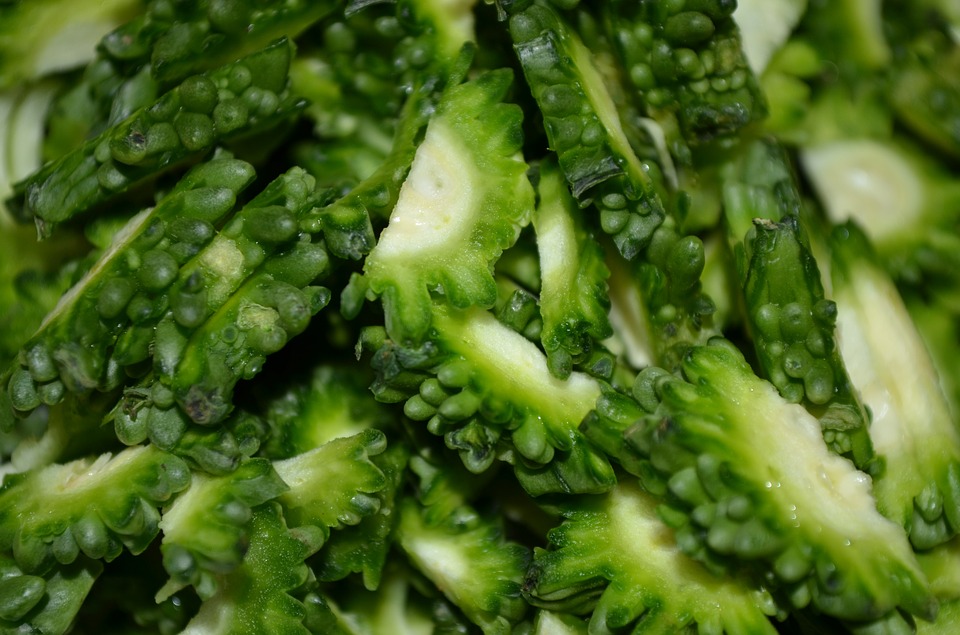
Broccoli is rich in fiber as well consist of chemicals that prevent blood vessels from damaging due to diabetes. Red onions help to reduce blood glucose in both type 1 and 2. Tomatoes are a rich source of antioxidants that protect kidney and blood vessels, which are more prone to complications of diabetes. Bitter gourd/ bitter melon is comprised of excellent anti-diabetic properties. A chemical compound called charantin present in bitter gourd can reduce blood glucose levels. Moreover, vicine and polypeptide-p are insulin-like compounds that act to reduce blood glucose levels. Furthermore, cucumber, snake gourd, bottle gourd, and green beans are beneficial vegetable varieties that help to lower blood sugar levels and maintain good health. Finally it can conclude that, consuming a wide variety of green vegetables will be helpful to maintain blood sugar levels. (9)
8. Extra-virgin olive oil
Extra virgin olive oil is an unrefined form of olive oil-rich with antioxidants. Antioxidants reduce the damage of oxidative stress caused by high levels of blood sugar level. Furthermore, olive oil has anti-inflammatory properties. Diabetes and related complications are resulted due to long term inflammation. Oleocanthal present in olive oil is responsible for anti-inflammatory activity. (8)
9. Fruits
Fruits are a rich source of vitamins, minerals, fiber, and also carbohydrates. Most fruits have low GI which will be beneficial for diabetes patients. Berries like blueberry and strawberry, apples, and pears have a low GI. Furthermore, they packed with antioxidants, vitamins, and fiber. Citrus fruits are a good source of vitamin C, folate, and potassium. Examples for some citrus fruits are orange, grapefruits, and lemon. Researchers have found that the antidiabetic action of citrus fruits is due to the presence of bioflavonoid antioxidants named as hesperidin and naringin. (7)
10. Sweet potatoes
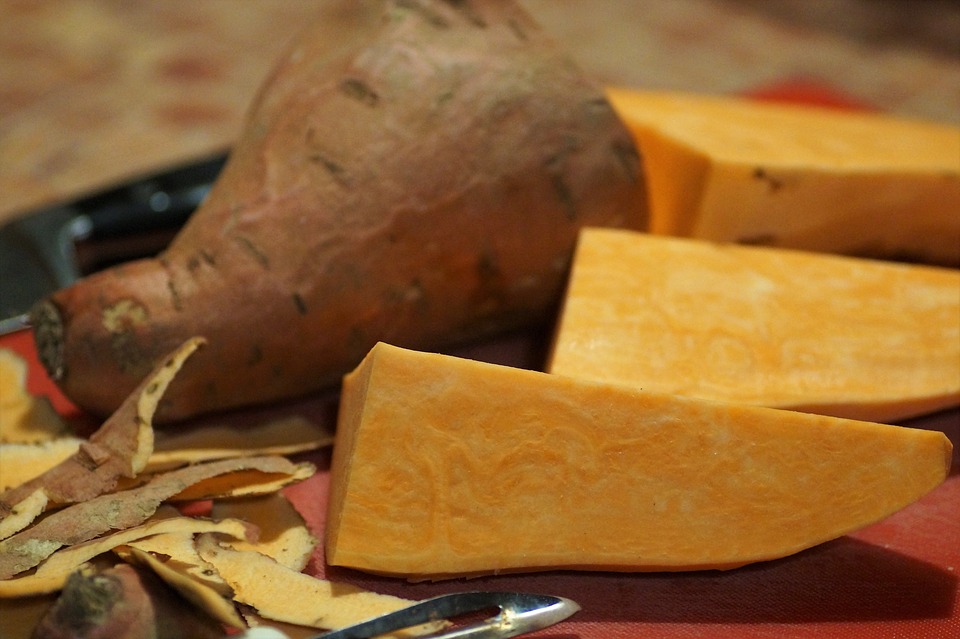
Unlike white potatoes, sweet potatoes have a low Glycemic Index (GI). Furthermore, sweet potatoes are enriched with carotenoids, vitamins, minerals, and fiber. The boiled sweet potatoes provide health benefits whereas baking, roasting, and frying can worst health benefits. (6)
11. Whole grains
The digestion process slows down when the diet is loaded with fiber. Nutrients are absorbed in a slower rate to the blood maintaining a stable sugar level. Moreover, whole grains have a low GI. They have less impact on blood glucose levels. The difference between whole grains and refined grains arises at the time of processing. Generally grains contain three parts as bran, endosperm, and germ. Whole grains consist of all these three parts whereas refined grains consist of only starchy endosperm. So it consists of less fiber and nutrients. Amaranth, brown rice, millet, oatmeal, popcorn, whole wheat, whole rye, and whole oats are examples for whole grains. (1)
12. Probiotic foods
Probiotics are present in fermented foods like soy-based products and beverages like yogurt. The positive effect of probiotics on foods includes inhibition of pathobiont bacterial growth, production of short-chain fatty acids, modification of gut pH, and boosting the immune system. Patients with type 2 diabetes have an imbalanced state of microbes. Overgrowth of gram-negative bacteria resulted in chronic inflammation which will increase the risk of type 2 diabetes. Also gut microbes modulate glucagon-like peptide-1(GLP-1). It associates with increasing insulin secretion and reducing gastric emptying time. (10)
13. Honey

Raw honey is a good source of calories, carbohydrates, vitamins, minerals, and antioxidants. The nutrition profile of raw honey is higher than that of processed honey. Honey, unlike sugar can stimulate the secretion of insulin and lower blood sugar level. Replacing sugar with raw honey will be beneficial. But consuming large amounts of honey can cause fluctuations in the blood sugar level. So, be sure to consume honey at moderate levels. (7)
14. Green leafy vegetables
Green leafy vegetables are a rich source of vitamins, minerals, protein, fiber, and antioxidants. Examples for some green leafy vegetables are spinach, cabbage, broccoli, and collard greens. These can be incorporated to once diet in the form of salads and soups. (7)

